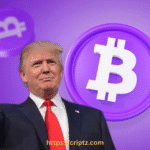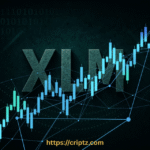JPMorgan Chase, one of the world’s largest financial institutions, has officially launched a blockchain-powered repurchase agreement (repo) settlement platform, marking another milestone in the growing adoption of blockchain technology in traditional finance. The new platform is designed to streamline the repo market, which involves short-term borrowing and lending of government securities, by enabling real-time settlements and reduced counterparty risk.
The repo market, valued in the trillions of dollars, plays a critical role in global financial stability. Traditionally, repo transactions involve multiple intermediaries and settlement delays that can create liquidity challenges for institutions. By leveraging distributed ledger technology (DLT), JPMorgan’s blockchain solution enables instantaneous transfer of collateral and cash, providing participants with greater efficiency, transparency, and reduced operational costs.
JPMorgan’s platform will run on its Onyx blockchain network, an enterprise-grade DLT infrastructure that has already been used for interbank transfers and tokenized assets. The new repo settlement service allows banks, asset managers, and institutional investors to conduct repo trades within minutes instead of the current T+1 or T+2 settlement timelines, enhancing liquidity and risk management across global markets.
The move underscores Wall Street’s accelerating embrace of blockchain in core financial market infrastructure. According to JPMorgan, early pilot programs have demonstrated significant success, with major financial institutions already participating in trial transactions. The bank emphasized that the blockchain-based system will not only reduce settlement risk but also help participants optimize their balance sheets and capital usage more effectively.
Market analysts suggest this could have a transformative impact on the repo market, potentially setting a standard for other banks and clearinghouses to follow. Moreover, as regulators continue to push for greater transparency in financial markets, blockchain-based settlement could become a model for compliance, particularly under evolving rules in the U.S. and Europe.
The introduction of this blockchain repo platform also highlights JPMorgan’s leadership in bridging traditional finance (TradFi) with digital innovation. With institutions under increasing pressure to adopt tokenization, real-time settlement, and blockchain infrastructure, JPMorgan’s move may accelerate broader adoption across fixed-income, derivatives, and securities lending markets.
As blockchain-powered finance gains traction, this development could represent one of the most significant steps yet in the integration of decentralized technologies into mainstream banking operations.
Market Analysis: Blockchain’s Role in Treasury Liquidity & Repo Market Efficiency
1. Impact on U.S. Treasury Liquidity
The repo market is the largest source of short-term liquidity for Treasuries. By adopting blockchain, JPMorgan’s platform could increase market depth and liquidity, making Treasuries more attractive to global investors. Faster settlement reduces the cash “trapped” in pending trades, freeing up capital and strengthening Treasury market resilience during stress events. This is particularly significant at a time when U.S. debt issuance is at historic highs.
2. Repo Market Efficiency
The current repo system relies on intermediaries and clearing processes that often introduce delays and inefficiencies. Blockchain settlement provides instantaneous, atomic transactions, removing the need for reconciliations and lowering operational costs. This could attract hedge funds, primary dealers, and money market funds seeking faster and more secure transactions. Widespread adoption could reshape repo market dynamics, making blockchain a new industry standard.
3. Blockchain in Traditional Finance (TradFi)
JPMorgan’s move represents a milestone for blockchain adoption in TradFi. Unlike experimental use cases, this rollout directly impacts one of the largest funding markets globally, valued at over $4 trillion daily. If successful, it could pave the way for blockchain use in other financial infrastructures, including derivatives, corporate bonds, and cross-border payments. Importantly, it signals that blockchain is no longer limited to crypto — it’s becoming an integral tool for modernizing global finance.
FAQ: JPMorgan’s Blockchain Repo Settlement Platform
What is JPMorgan’s blockchain repo settlement platform?
It’s a blockchain-based system that allows institutions to settle repurchase agreements (repos) in real time, reducing settlement times and counterparty risks.
Why is this important for the U.S. Treasury market?
The repo market underpins U.S. Treasury liquidity. Faster settlement boosts efficiency, frees up capital, and improves resilience during market stress.
How does blockchain improve repo market efficiency?
Blockchain enables instant, atomic transactions, eliminating intermediaries and reconciliation delays, which reduces operational costs and risk.
Does this mean blockchain is being adopted in traditional finance?
Yes. JPMorgan’s move shows blockchain is moving beyond crypto into core financial infrastructures, such as Treasuries and repo markets.
Could this impact global financial markets?
If widely adopted, it could set new standards for liquidity, efficiency, and transparency, influencing everything from corporate bonds to cross-border finance.
Sean Pratt is a passionate crypto enthusiast with a sharp eye for emerging technologies and innovative investment strategies. Actively engaged across multiple exchanges, he consistently researches, analyzes, and invests in promising new projects — from disruptive blockchain ventures to trending meme coins. Known for his calculated risk-taking, he achieved an impressive 13X return with the $PEPE token. His investment approach blends long-term vision with meticulous market analysis, leveraging deep insights into cryptocurrency mechanics, global market shifts, and the evolving potential of blockchain innovation.
Why Trust CRIPTZ?
At criptz.com, we bring you up-to-the-minute cryptocurrency news and expert analysis in 2025. Our seasoned team delivers accurate coverage of market trends, blockchain breakthroughs, and emerging innovations, backed by strict editorial standards. With 24/7 reporting on price movements, regulations, and tech advancements, we empower traders and investors to navigate the fast-paced crypto world with confidence. Count on Criptz.com for trustworthy insights into digital assets.







